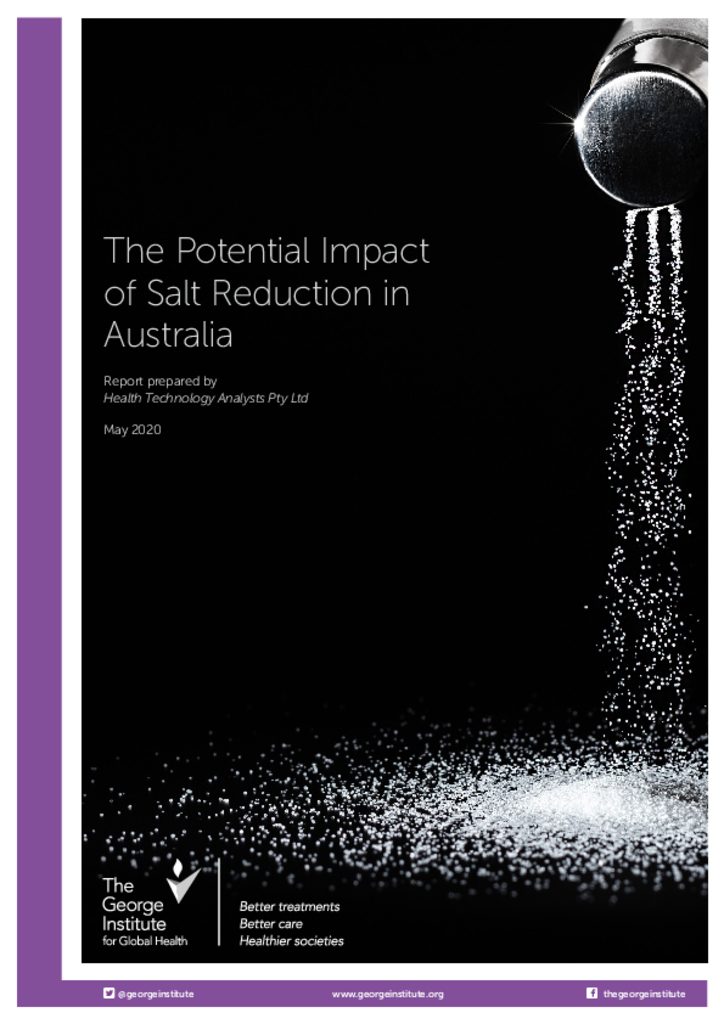
The Potential Impact of Salt Reduction in Australia
This project assessed the benefits of implementing the salt reduction programs throughout the whole of Australia, leading to the prevention of stroke and CHD events, reduction in healthcare need, informal care, and productivity costs. These benefits are compared with the cost of implementing the three different salt reduction programs.
The economic modeling explores the effect of varying levels of salt reduction through three types of salt reduction programs: (1) mandatory salt reduction legislation, which requires food manufacturers to comply with maximum salt targets across a wide range of processed foods, (2) voluntary participation of food manufacturers in limiting salt use in processed foods, and (3) a community health program for the prevention of cardiovascular diseases
Results showed that by reducing salt intake by 1 g/day across Australia, the number of potentially saved lives each year is estimated to be 1,364, with an estimated 2,626 strokes and 2,526 CHD events avoided.
The estimated social return on investment of implementing salt reduction programs across Australia is that for each dollar invested in a salt reduction program, $2.40 for a community program, $5.70 for a voluntary program, and $10 for a mandatory program are returned to society.
These findings demonstrate that whilst all programs produce a positive return on investment, the mandatory salt reduction program is likely to yield the best social return on investment from the prevention of cardiovascular events.



